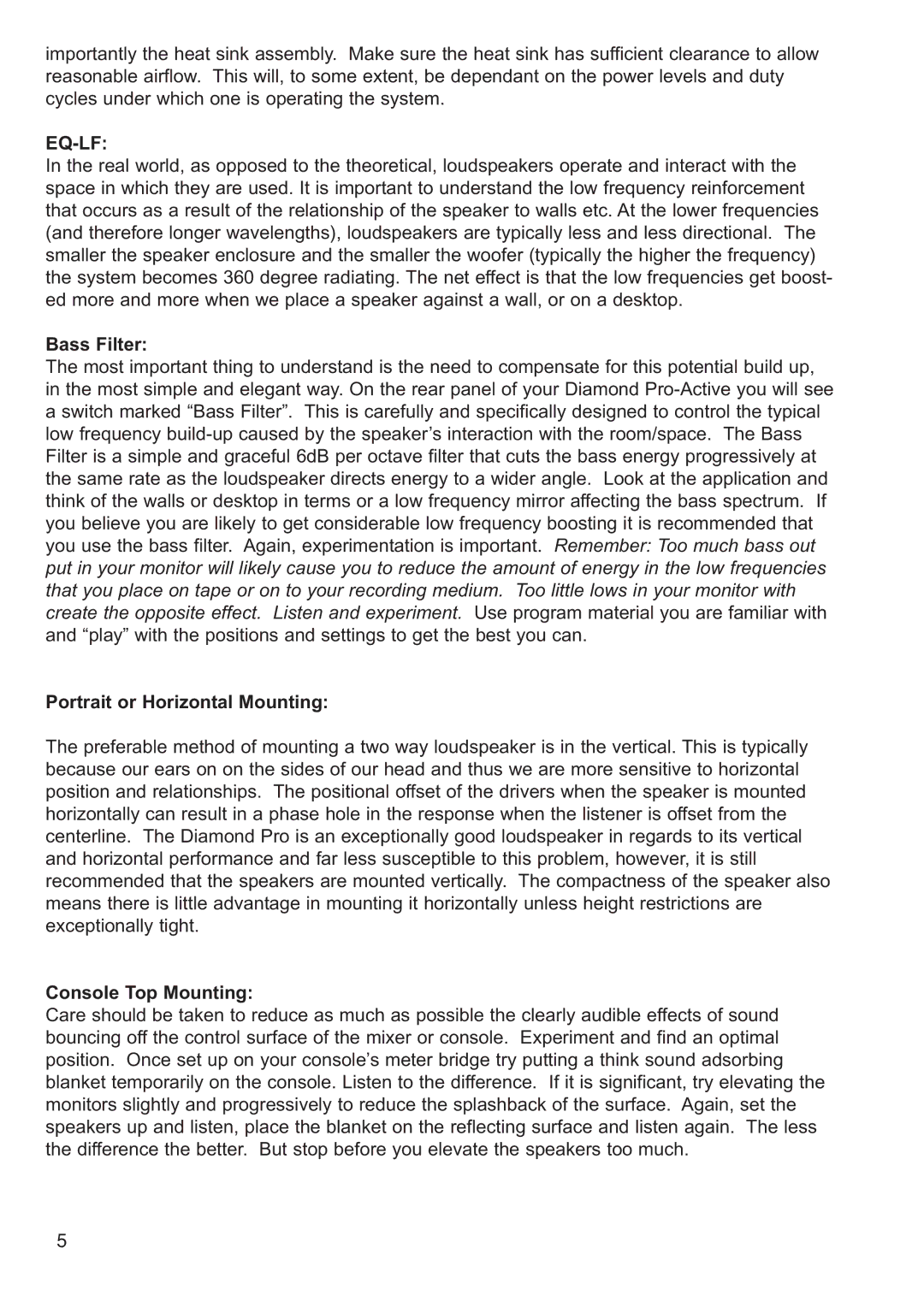importantly the heat sink assembly. Make sure the heat sink has sufficient clearance to allow reasonable airflow. This will, to some extent, be dependant on the power levels and duty cycles under which one is operating the system.
EQ-LF:
In the real world, as opposed to the theoretical, loudspeakers operate and interact with the space in which they are used. It is important to understand the low frequency reinforcement that occurs as a result of the relationship of the speaker to walls etc. At the lower frequencies (and therefore longer wavelengths), loudspeakers are typically less and less directional. The smaller the speaker enclosure and the smaller the woofer (typically the higher the frequency) the system becomes 360 degree radiating. The net effect is that the low frequencies get boost- ed more and more when we place a speaker against a wall, or on a desktop.
Bass Filter:
The most important thing to understand is the need to compensate for this potential build up, in the most simple and elegant way. On the rear panel of your Diamond
Portrait or Horizontal Mounting:
The preferable method of mounting a two way loudspeaker is in the vertical. This is typically because our ears on on the sides of our head and thus we are more sensitive to horizontal position and relationships. The positional offset of the drivers when the speaker is mounted horizontally can result in a phase hole in the response when the listener is offset from the centerline. The Diamond Pro is an exceptionally good loudspeaker in regards to its vertical and horizontal performance and far less susceptible to this problem, however, it is still recommended that the speakers are mounted vertically. The compactness of the speaker also means there is little advantage in mounting it horizontally unless height restrictions are exceptionally tight.
Console Top Mounting:
Care should be taken to reduce as much as possible the clearly audible effects of sound bouncing off the control surface of the mixer or console. Experiment and find an optimal position. Once set up on your console’s meter bridge try putting a think sound adsorbing blanket temporarily on the console. Listen to the difference. If it is significant, try elevating the monitors slightly and progressively to reduce the splashback of the surface. Again, set the speakers up and listen, place the blanket on the reflecting surface and listen again. The less the difference the better. But stop before you elevate the speakers too much.
5
